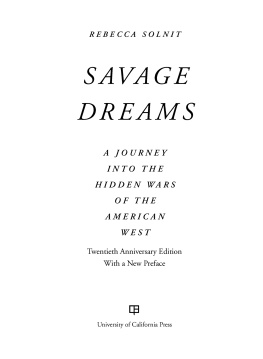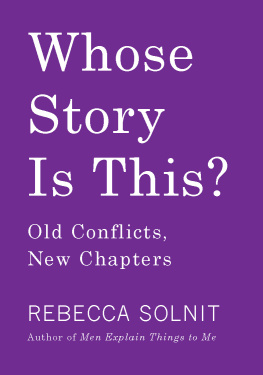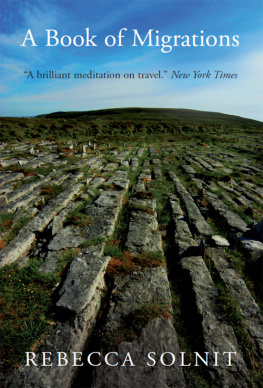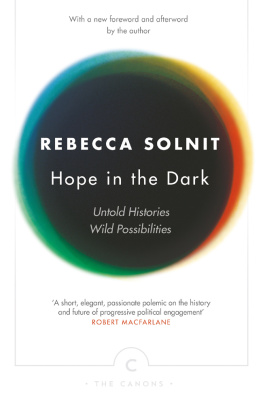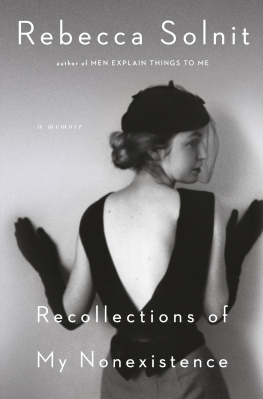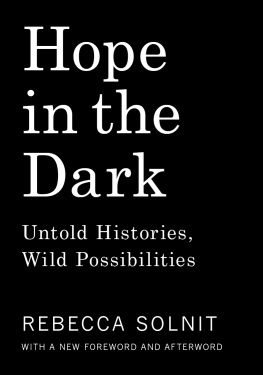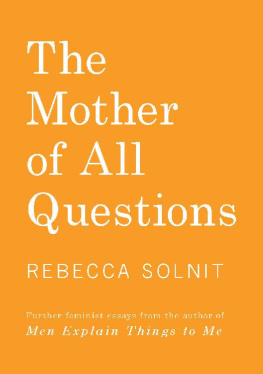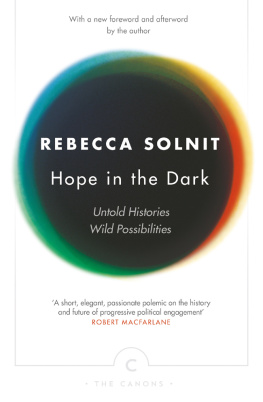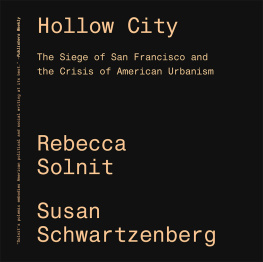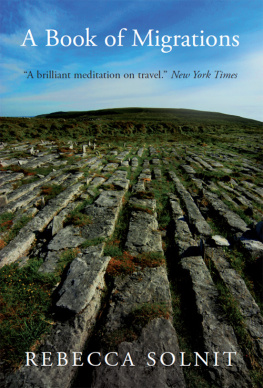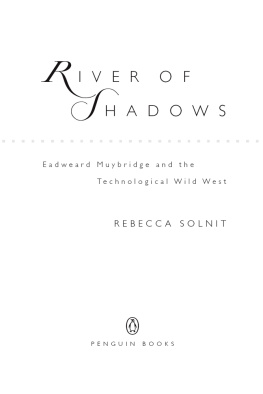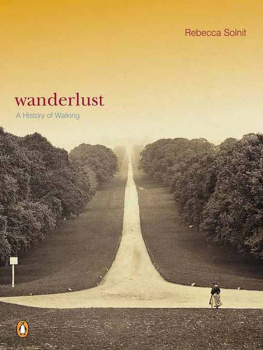REBECCA SOLNIT
SAVAGE
DREAMS
A JOURNEY
INTO THE
HIDDEN WARS
OF THE
AMERICAN
WEST
Twentieth Anniversary Edition
With a New Preface
University of California Press
University of California Press, one of the most distinguished university presses in the UnitedStates, enriches lives around the world by advancing scholarship in the humanities, socialsciences, and natural sciences. Its activities are supported by the UC Press Foundation and byphilanthropic contributions from individuals and institutions. For more information, visitwww.ucpress.edu.
University of California Press
Berkeley and Los Angeles, California
University of California Press, Ltd.
London, England
First University of California Press edition 1999
Reprinted by arrangement with the author.
1994, 2014 by Rebecca Solnit
ISBN 978-0-520-28228-5 (paper)
ISBN 978-0-520-95792-3 (ebook)
The Library of Congress has cataloged an earlier edition of this book as follows:
Library of Congress Cataloging-in-Publication Data
Solnit, Rebecca.
Savage dreams : a journey into the landscape wars of the American West /Rebecca Solnit.1st California paperbacks ed.
p. cm.
Originally published: San Francisco : Sierra Club Books, c1994.
Includes bibliographical references (p. ) and index.
ISBN 978-0-520-22066-9 (pbk. : alk. paper)
1. West (U.S.)Description and travel. 2. LandscapeWest (U.S.)History. 3.Yosemite National Park (Calif.). 4. Nuclear weaponsTestingEnvironmental aspectsNevada. 5.Indians of North AmericaWest (U.S.)Wars. I. Title.
F591.S6685 1999
978dc21
99-20034
CIP
Contents
DUST, OR ERASING THE FUTURE:
THE NEVADA TEST SITE
WATER, OR FORGETTING THE PAST:
YOSEMITE NATIONAL PARK
It is the innocence which constitutes the crime.
James Baldwin, The Fire Next Time
And he never was in Eden, because coyotes livein the New World. Driven forth by the angel withthe flaming sword, Eve and Adam lifted their sadheads and saw Coyote, grinning.
Ursula K. LeGuin,
A Non-Euclidean View of California
as a Cold Place to Be
PREFACE TO THE TWENTIETH ANNIVERSARY EDITION
What the Landscape Taught
I
I was so lucky. Some people might read this book as an account oflabor or duty: in it, I do a lot of work as an activist and more as ahistorian, getting arrested and getting into archives with equalenthusiasm. But it was all a gift, all an opening up of the world forthe young woman I was then. And the archives, stories, andhistorical context strengthened my commitment, while the proteststaught me things; they belonged together. They made me. Thosegifts are what this book endeavors to pass on.
It is strange to meet the writer of this book twenty years after Iwas her. She is both familiar and a little strange to me; I agree withmost of what she says and disagree with some of how she says it.The excitement of that formative era comes back like hot desertwind when I read this book; I smell the dust and desert creosoteand sagebrush, see the faces of heroes now gone, remember awkwardmoments and revelatory ones. With some of the 1991 moneyI received for this book from its original publisher, Sierra ClubBooks, I bought a used Chevy S10 pickup. That truck took me allacross the West, from Texas to Alberta, and to Nevada and NewMexico and the Mojave over and over, through the 1990s. I hauledfriends and camping gear and books and printers and often slept inthe back of it.
With it, and on foot after it was parked, I made my way to thehigh country of the Sierra and the Rockies, the arid country inbetween, and the deserts of southeastern California. I was never sofree before or since; I learned confidence and how to move acrossvast expanses of space in ways I had not known before. Afterward,that beast sometimes called success came and clamped onto meand made me more and more busy with contracts and obligations,schedules and expectations, and I was never again quite so able totake up an invitation to go west with a days notice or to take twoweeks to get somewhere. That lost, former self and that freedomare two things I taste when I reread this book. Even more thanthat, the people and the places return with delight.
This is a book about my educationor rather about theremarkable things that were given to me after I was supposedlyeducated but when I was just finding out who and where I was andwhat I might do and say about it. I wrote Savage Dreams so that itcould be everyones education, because the people I listened to andthe histories I dug into, the adventures I had and the heroes Ifound, were not and, twenty years later, still are not so well known.And they matter: the Nevada Test Sites Peace Camp; the easternNevada ranch of the Western Shoshone matriarchs who were moreor less at war with the federal government; and the secret recessesand archives of one of the most visible places on earth, YosemiteNational Park. In those places, I found the other American histories:of the Columbian invasion that had never ended, because theindigenous people here had never been entirely conquered orerased; of the scale of the mistakes Europeans had made aboutnature and time when they imagined this hemisphere as pristine,static, waiting to begin when they arrived; and of the real shape ofthe nuclear wars, which were not a terrible eventuality, as evenmost antinuclear activists then believed, but included this low-intensitydomestic war that was pursued at the rate of about a nucleardetonation a month in Nevada between 1951 and 1991 and thatlooms over us still.
The Indian war that began in Yosemite and never ended, thenuclear war that started not so very far away as the crow flies acentury later and will end when the last radiation from the bombsfades from the landscapethese were not the world as mainstreamvoices described it. This world was something more violent,but also more full of resistance and thereby of possibility. Iplunged into it, half by accident, following friends, principles,and hunches. In the course of my adventures, I met the people whowould teach me other things: heroism, integrity, commitment,memory, a deeper sense of time, a sense of place, and what youmight call westernness, a gallant and resourceful adaptation tothe vast, arid, lightly populated region that remains overlookedand little understood by the rest of the country, or empire, ofwhich its supposed to be part.
The heroes of this book are numerous, and quite a lot of themare still at work (others, such as Mary Dann, Bill Rosse, and CorbinHarney departed this earth, or rather joined it, some years back,though they live on in many ways and are in these pages for you tomeet). Its charismatic antihero, James Savage, after whom Iunwisely named the book, has been dead for 161 years and remainsalmost unknown. And maybe in this sense it is an old-fashionedbook: it has heroes and villains, it has hope, it has directengagementand we won some of our battles, and the world changed,much of it after this book was written. Perhaps the greatest heroeswere and are the places themselves, for their endurance, theircapacity to absorb damage and continue, the unpredictable richesthey give in all sorts of ways, their ability to sort out complexity byletting geographical convergence make meaning.

